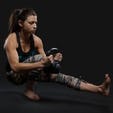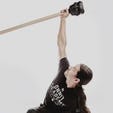As a gym owner, it’s your responsibility to make your group training as effective as possible for your clients. I’d like to help you make it more efficient, fun, smart, and results driven, essentially creating something that will build a tribe. A tribe that is constantly growing and making your facility much more than a gym… making it a way of life.
A gym represents growth in all areas of life; people want that, they’re starving for it. People are drowning in information, but thirsty for transformation and a community of people that inspire belief in change. You may feel like I’m going a little overboard here, but the truth is (at least at my gym), that we’re in the business to make people’s lives better, and we use the vehicle of fitness to do that.
It’s Time For a Change
Are you still running boot camps (calling them that)? What do people really feel about when they hear that? They think of a controlling environment. Yelling. Instructors pushing you “through” pain. People dropping out. Only the brave and courageous “make it.” Recovery is for the weak.
And yet boot camps keep popping up because they’re easy to set up and all you need to do is make people tired as your put them through the most challenging workouts. Are you simply trying to help the people who can make it through the toughest workouts, or are you purposeful about helping people who choose to make a change in their lives? Hopefully you choose the latter.
How to Retain
In fitness, as in life, things change and if you’re not constantly growing and pursuing the best solutions for solving your client’s frustrations (a.k.a. getting them results) short and long term–time will leave you behind. Your clients will only grow as much as you continue to grow and evolve. People walk through your doors to get specific solutions for specific problems, but they stay because:
#1. They achieved the results they were looking for.
#2. They loved the experience, the community, and what YOU are about (your story, what you stand for, what you stand against).
#3. They feel like it is the third place (next to home and work) where they feel great and are surrounded by people that help them grow in all areas.
Results matter, and building a tribe is more than just getting results.
Are you providing your clients with the best in coaching, training, nutrition, behavioral/ habit change, mindset, motivation, connection, etc? Those are all things that influence and inspire change in our clients.
Rise As One
To “rise as one” is one of our core values at Vigor Ground Fitness and Performance. We live it, breathe it, and apply it every single day. I played basketball as a wee young’n all the way to the pros; almost two decades worth of hardwood blood, sweat, and tears, triumphs and failures (lessons really), experiences that will never be forgotten, and most importantly, relationships that will never be broken. Do you know what I miss the most out of all those years? My team.
The feeling of pushing together to achieve almost impossible goals (by the standards of others) and knowing that my team was there to challenge me and make me better, as well as pick me up after losses, injuries, and even trials and tribulations in life. Just like I was there for them, for each and every one of the people on that team. This is where I learned to work hard and push when times were tough, where I learned to understand that failures were really lessons, where I learned that the team is stronger than the sum of its parts as individuals, and where I FELT that people had my back and would run through walls for me!
My team was the reason I left the streets and a life that would keep taking me down the wrong path because I didn’t want to let them down. This is why our large group training is called TEAM TRAINING. Each person, from members to coaches, is on the same team and we work together to take each other to the next level in all areas of life. Team Training is what was formerly known as a boot camp.
The Nuts & Bolts of Team Training
Whwen Anyone Walks Through Our Doors To Try Our System Or Join Our Team Training, We Make Sure That We:
1. Tell our story, show how and why we care, and how we can help them achieve the feelings they are searching for; how we can be the solution to their frustrations (a.k.a. what keeps them up at night).
2. Connect with them to build a relationship as well as trust and confidence in us and themselves.
3. Explain our philosophies in lifestyle, mindset, training, nutrition, and everything in between; how our system will help them achieve their goals (feature-benefit-criteria).
4. Assess the potential client to make sure that they are ready to train, and if not, we will set them up for a one- on-one assessment with a coach to find the best solution.
5. Teach soft tissue release methods, breathing drills, reset drills (joint centration), drills to reduce neural threats (allowing the nervous system to function better), and corrective stretches. This is all so that clients can get ready before we start the dynamic warm up. We explain the importance of these drills and how they connect to their goals, and we get a very high compliance from clients.
6. We explain and go through dynamic warm ups.
7. We teach and coach the main lifts that we use and all their regressions and progressions. Everyone feels confident going into their first training session knowing what they should be doing and not just getting thrown into the gauntlet.
8. Take them through a shorter team training session so they get a feeling for how it will be when they start, preparing them for everything that will happen so there are no questions left unanswered (uncertainty creates anxiety and stress in clients).
9. Set up one-on-one desk dates with each individual and a coach to dig deeper into their needs, wants, and how we can help them. This is important to assess their specific goals and create a blueprint for success, create accountability, and really show that we are purposeful about helping them reach their goals.
We do all of these tasks in a 90+ minute orientation, which we offer twice a week. You cannot start team training without it. Letting people just “jump” into the workout would be doing a disservice to them and jeopardize their health as we don’t know enough about them, and they most likely don’t know what they are getting into.
Even though we could not provide the level of service that we can with semi-private and small group personal training, we still wanted to cover all the important bases in training that will get our clients the results, experience, and community feel that will keep them coming back, differentiating us from other programs. The quality of how this is done is huge factor – it’s not just what you do but how you do it.
The R7 System
With program design we structure training through the R7 system, which is Mike Robertson’s awesome concept. R7 is explained through the following program structure:
R1. Release (soft tissue work)
R2. Reset (breathing, PRI, BodyMap drills)
R3. Readiness (this is dynamic warm ups)
R4. Reactive (plyo’s, jumps, speed, agility, throws, etc.)
R5. Resistance (strength training)
R6. Resiliency (conditioning/energy system training)
R7. Recovery (cool down – breathing, soft tissue, stretching, group)
Following this in a semi-private or small group-training program is simple yet difficult to do all in one team training session because of the time frame and the size of the group. You should make sure that your clients get the full benefits of the system which is structured it in the following way.
During orientation we thoroughly teach R1, R2, and R3, which clients do by themselves before the coach starts the team training session. This means clients come in early and foam roll, do breathing drills and stretches in the warm up area which also helps people connect and bond (we created this area so that it did exactly that, get people talking, connecting, and becoming more of a team).
The coach runs the dynamic warm up (R4) at the beginning of the training session. Although we can’t take larger groups through reactivity, strength, and conditioning in one session, we created three types of Team Training, each one has more of an emphasis on reactivity, strength, or conditioning.
The Three Types Of Team Training Session
Training For Warriors Hurricanes (R4)
This training method consists of nine rounds of a sprint variation followed by either bodyweight, dumbbell/kettlebell/ other implement, barbell, or strongman supersets (varying in intensity from F1-F5; like a hurricane, the higher the number the more recovery is needed).
The key here is that we are training velocity/power/ speed (we can modify and regress for each individual if necessary) which is a component missing in many of the large group training programs.
Full Body Strength – Density Training (R5)
In these sessions we focus on exercises that create time under tension in the 8-15 rep range (going heavier in group training sessions starts reducing safety). Over time people can see strength gains; they track how much volume they were able to do in a certain time period. This shows clients continuous improvement that is tangible, empowering them.
Metabolic Intervals (R6)
The metabolic intervals are all timed circuits structured in a different sequence of exercises that get people moving through all the movement patterns; this gets them moving, feeling, and performing better (these exercises are also one’s that most people have lost from sitting and living a sedentary lifestyle).
Apart from the difference in time versus reps, what differentiates intervals from whole body strength is the use of exercises. For example, here are exercises moving from metabolic to more strength based:
Squat Jumps → Bodyweight Squats → Dumbbell Squat Thrust → Kettlebell Goblet Squats
Lunge Jumps → Reverse Lunges → Dumbbell Valslide Lunges → Kettlebell 90/90 Static Lunges
We can break down each exercise on a continuum from metabolic to strength based. All of these methods have a metabolic component, but they also have an emphasis on different properties that we want our clients to apply, as it will show in their results, both in body composition and performance.
We teach the recovery methods during the orientation and the coach also lets everyone know what to do after training (breathing drills, stretching, rolling) which covers R7. This is also planned, as it is another opportunity for everyone to connect and share their struggles and successes, helping them connect and become closer.
When the client signs up for the Team Training program we sit down with them and outline what will be the best schedule based on their goals, schedule, and also which group they like the best (it may have something to do with the people in it, the coach, or what they enjoy).
We don’t “push” them into the optimal programming, but rather the schedule and Team Training sessions they feel confident doing, feel supported in, and where they are challenged but have fun at the same time. Progress not perfection!
More Than Just A Workout – The Architecture Of a Team Training Session
There is an architecture to a Team Training session that gets people invested every single day and gives them more than just a “workout;” it connects important things in the client’s life (their personal health, family, career, etc.) to what they will be doing.
This creates awareness and the stories ingrain the lesson so it stays far beyond the training. One of my favorite quotes is “Awareness precedes change.” Thanks to Martin Rooney for inspiring this component into our training system.
THIS IS HOW WE BREAK IT DOWN:
• Motivational Message/Story •
• Nutritional/Lifestyle Tip •
• Training Explanation •
• Workout •
• Team Huddle/Story •
Here are examples of each method of Team Training, You Can see the warm ups and exercises in this training video:
Metabolic Intervals Workout
TFW Hurricanes – Level 2 Workout
Perform the sprint variation and immediately follow it up with the superset of exercises. Take a short break so that you can repeat your next sprint with high velocity (the sprints should not become sloppy and jogging). Each sprint variation is for 3 rounds before you move on to the next sprint variation and superset of exercises (for a total of 9 rounds).
Rounds 1-3:
80-yard Shuttle Sprint Push Up x 12 Kneeling Jamball Slams x 12
Rounds 4-6:
40-yard Prowler Push
TRX Rows x 12 Mountain Climbers x 25 seconds
Rounds 7-9:
Band Resisted High Knees x 20 seconds Kettlebell Swings x 12
Dumbbell Alternating Renegade Rows x 12
We follow smart programming, progress the clients, challenge them, and make them feel successful. We make clients better and don’t beat them down. They feel tired yet accomplished when they leave and they have not only got a great workout but also took away a powerful message that will carry over into their life. This is all while being in a supportive, energetic environment with coaching that empowers them and doesn’t control them.
Everyone can make someone tired but not everyone can make someone better. We make sure to change the tools we use as we engage the clients and encourage them to try something new; from kettlebells, sandbags, ropes, maces, sleds, prowlers, slamballs, sandbells, and everything in between. They are just tools, but they make a difference in Team Training workouts.
The times they are changing, and to be the best and provide the best results, experience, and create a connection that ends up in transformations inside and out – as well as building a tribe; you have to constantly grow yourself to be the best possible coach and create the best atmosphere for your clients.
Implement the Team Training methods and take your programs, and your gym, to the next level. Before you go, give me a mental high five since no client enters or leaves my gym without one (this anchors success and achievement on the way in and out!).
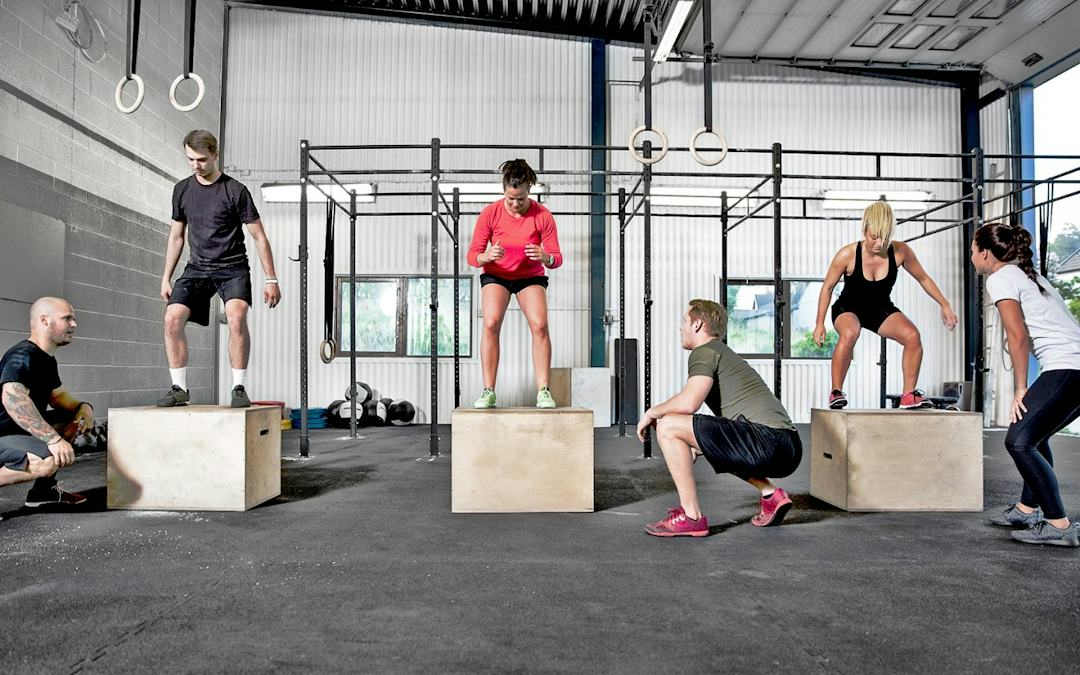
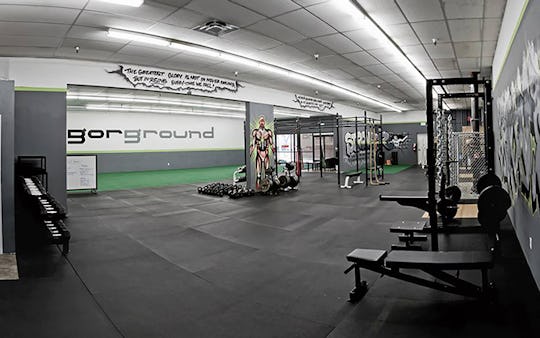
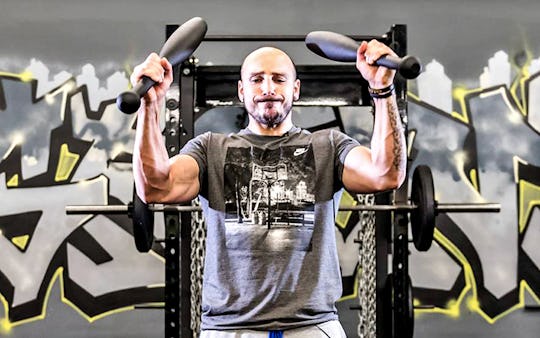
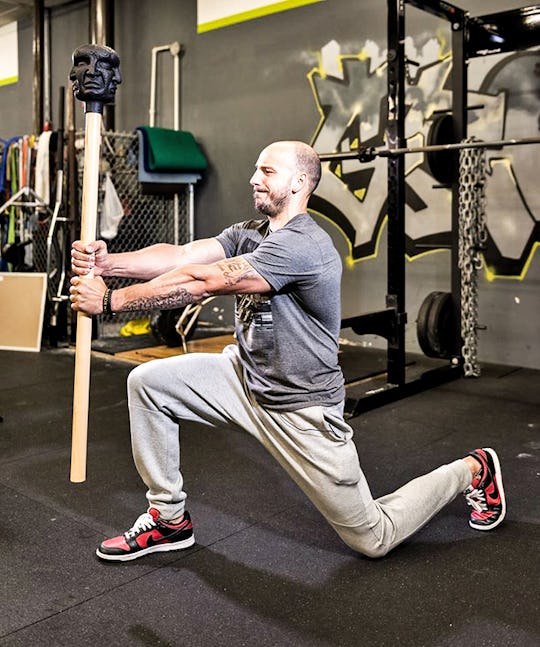
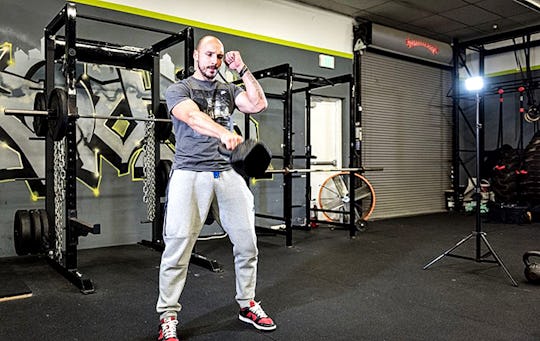
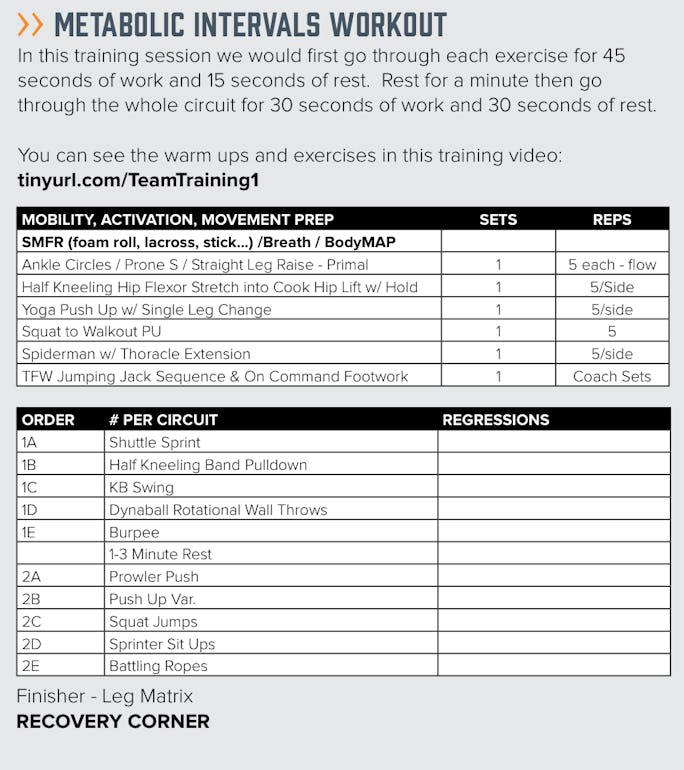
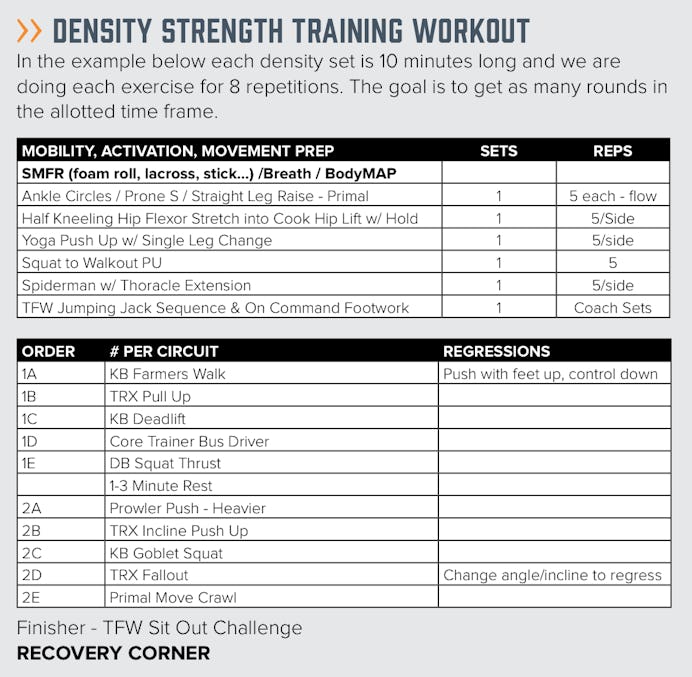
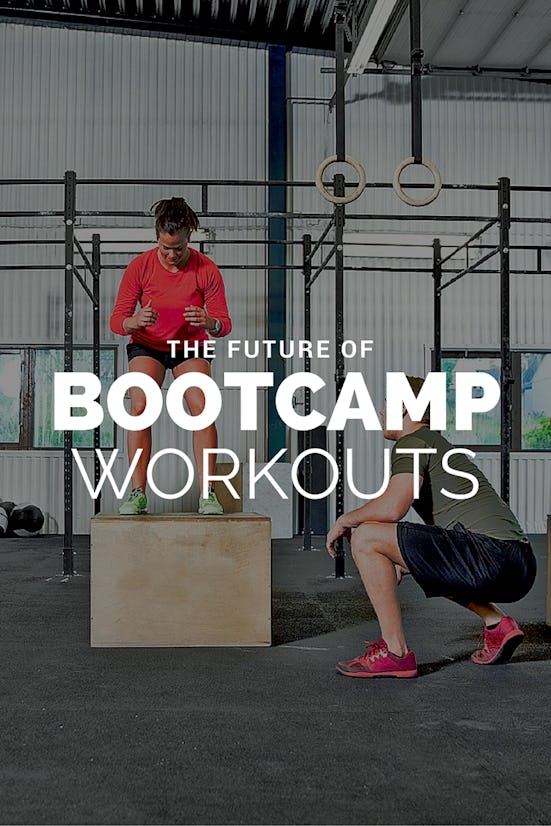
)

